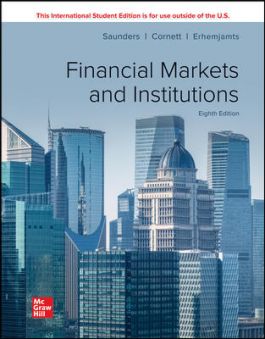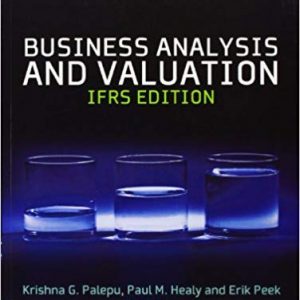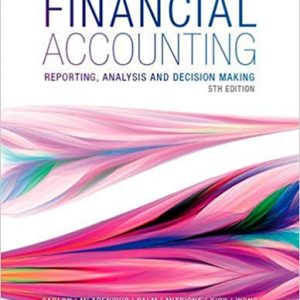No products in the cart.
Finance Test bank & Solutions
ISE Financial Markets and Institutions 8th Edition Anthony Saunders, Marcia Millon Cornett © 2022 Solution manual
ISE Financial Markets and Institutions 8th Edition Anthony Saunders, Marcia Millon Cornett © 2022 Solution manual
ISE Financial Markets and Institutions
( Solution manual)
ISE Financial Markets and Institutions 8th Edition Anthony Saunders, Marcia Millon Cornett © 2022 Solution manual
Edition:8th Edition
Author Name:Anthony Saunders, Marcia Millon Cornett
contact:
Whatsapp +1 (949) 734-4773
for the Facebook page click here
for more books for ( Test Bank and Solution Manual) click here
sample free
$35.00 $50.00
ISE Financial Markets and Institutions 8th Edition Anthony Saunders, Marcia Millon Cornett © 2022 Solution manual
ISE Financial Markets and Institutions
( Solution manual)
ISE Financial Markets and Institutions 8th Edition Anthony Saunders, Marcia Millon Cornett © 2022 Solution manual
Edition:8th Edition
Author Name:Anthony Saunders, Marcia Millon Cornett
contact:
Whatsapp +1 (949) 734-4773
for the Facebook page click here
for more books for ( Test Bank and Solution Manual) click here
sample free
Part I
Introduction and Overview of Financial Markets
Chapter One
Introduction

I. Chapter Outline
- Why Study Financial Markets and Institutions? Chapter Overview
2. Overview of Financial Markets
- Primary Markets versus Secondary Markets
- Money Markets versus Capital Markets
- Foreign Exchange Markets
- Derivative Security Markets
- Financial Market Regulation
- Overview of Financial Institutions
- Unique Economic Functions Performed by Financial Institutions
- Additional Benefits FIs Provide to Suppliers of Funds
- Economic Functions FIs Provide to the Financial System as a Whole
- Risks Incurred by Financial Institutions
- Regulation of Financial Institutions
- Trends in the United States
- Globalization of Financial Markets and Institutions
Appendix 1A: The Financial Crisis: The Failure of Financial Institutions’ Specialness (available through McGraw Hill’s Connect. Contact your McGraw Hill representative for more information on making the appendix available to your students).
- Learning Goals
- Differentiate between primary and secondary markets.
- Differentiate between money and capital markets.
- Understand what foreign exchange markets are.
- Understand what derivative securities markets are.
- Distinguish between the different types of financial institutions.
- Know the services financial institutions perform.
- Know the risks financial institutions face.
- Appreciate why financial institutions are regulated.
- Recognize that financial markets are becoming increasingly global.
III. Chapter in Perspective
This chapter has three major sections and one minor section. The text provides a general overview of the major types of U.S. financial markets, focusing primarily on terminology and descriptions of the major securities, market structures and regulators. Market microstructure is not discussed. Foreign exchange transactions are also briefly introduced. Second, the chapter describes the various types of financial institutions and explains the risks they face and the services they provide to funds’ users and funds’ suppliers. The financial crisis is discussed and the impact of Brexit is considered. The final section of the chapter provides statistics about the rapid growth of globalization of both markets and institutions. An appendix covering the details of the financial crisis and the government intervention programs, including the costs as of late 2009, is available through McGraw Hill’s Connect. Contact your McGraw Hill representative for more information on making the appendix available to your students.
IV. Key Concepts and Definitions to Communicate to Students
Financial markets Primary markets
Initial public offerings (IPO) Secondary markets
Derivative security Liquidity
Money markets Over-the-counter (OTC) markets
Capital markets Derivative security markets
Financial institutions Direct transfer
Price risk Indirect transfer
Delegated monitor Asset transformers
Diversify Economies of scale
Enterprise risk management (ERM)
Appendix terms include:
TARP Federal Reserve Rescue Efforts
Federal Stimulus programs American International Group
FDIC Bank takeovers Other financial initiatives
Other housing initiatives
V. Teaching Notes
- Why Study Financial Markets and Institutions?
For an economy to achieve its potential growth rate, mechanisms must exist to effectively allocate capital (a scarce resource) to the best possible uses while accounting for the riskiness of the opportunities available. Markets and institutions have been created to facilitate transfers of funds from economic agents with surplus funds to economic agents in need of funds. For an economy to maximize its growth potential it must create methods that attract savers’ excess funds and then put those funds to the best uses possible, otherwise idle cash is not used as productively as possible. The funds transfer should occur at as low a cost as possible to ensure maximum economic growth. Two competing alternative methods exist: direct and indirect financing. In direct financing the ultimate funds supplier purchases a claim from the funds demander with or without the help of an intermediary such as an underwriter. In this case, society relies on primary markets to initially price the issue and then secondary markets to update the prices and provide liquidity. Trustees are appointed to monitor contractual obligations of issuers and instigate enforcement actions for breach of contract terms. In indirect financing, the funds demander obtains financing from a financial intermediary. The intermediary and the borrower negotiate the terms and cost. The intermediary obtains funds by offering different claims to fund suppliers. In this case the intermediary is usually responsible for monitoring the contractual conditions of the financing agreement and perhaps updating the cost if appropriate.
The financial crisis of 2008-2009 reversed a long-term trend of deregulating financial institutions. Regulatory risk and costs of regulation increased as a result of the new laws, higher capital requirements and stricter regulatory oversight. A former Federal Reserve Chair, Alan Greenspan, believed in only minimal regulation and his philosophy appeared to prevail at many regulatory agencies including the SEC. As discussion leader, you may wish to point out that it is not clear whether the existing rules would have been sufficient to prevent the crisis if they had been enforced. Laws and regulations by themselves are insufficient to ensure proper behavior in any case. Practitioners and academics also need to emphasize business ethics and individual accountability. Nevertheless, the financial crisis led to the massive Dodd-Frank bill (Wall Street Reform and Consumer Protection Act) designed to limit systemic risk and tighten controls on the institutions that many blame for causing the financial crisis. The “Volcker Rule” prohibited insured intermediaries from engaging in proprietary trading, owning, or managing a hedge fund and private equity investments. The Volcker rule was only slowly implemented because banks correctly maintain that many of their proprietary activities are actually hedges to reduce risk and these are allowed. It is difficult to separate hedging from speculative based trades. An unintended consequence of the Volcker rule is the reduction of liquidity in the bond markets as banks reduce their bond trading activities. Although details are not clear at this time, it is likely the Trump administration will roll back many Dodd-Frank requirements, including the Volcker rule and the Consumer Finance Protection Bureau’s (CFPB) attempts to increase the fiduciary responsibility of investment advisors with respect to conflicts of interest with their clients. In 2018, the Volker Rule was amended to exempt smaller banks from the full scope of the Volcker Rule as well as eliminated the presumption that positions held for fewer than 60 days violated the rule unless bankers proved otherwise. The amendments went into effect in 2019 resulting in bank holdings of derivative securities increasing to $201.32 trillion by 2019.







Samuel (verified owner) –
finally, I can get A+
Samuel –
Kaden Arabic (verified owner) –
Very well worth the money.
Kaden Arabic –